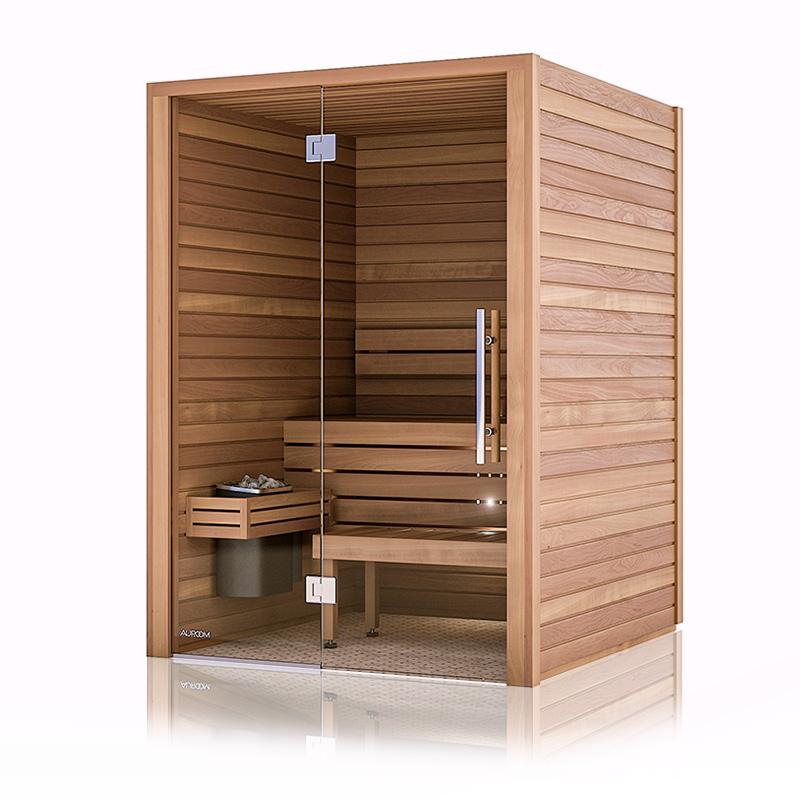How Traditional Sauna can Save You Time, Stress, and Money.
How Traditional Sauna can Save You Time, Stress, and Money.
Blog Article
Some Known Details About Traditional Sauna
Table of ContentsThe Traditional Sauna StatementsThe Only Guide to Traditional SaunaThe Greatest Guide To Traditional SaunaTop Guidelines Of Traditional SaunaThe Main Principles Of Traditional Sauna
Energy savings is one point to consider for individuals who intend on using their sauna frequently. For a typical sauna, bathers normally require to await 30-40 mins for the space to pre-heat prior to going into. Infrared saunas, on the various other hand, typically reach their suitable temperature in around 15 minutes.That suggests that in an infrared sauna, bathers can start appreciating their sauna quickly. One difference in between the two kinds of sauna that is typically forgotten is the social experience.
Also, think about the number of individuals will certainly be making use of the sauna prior to making your choice. Adding a sauna to your home can be among one of the most amazing and rewarding decisions you'll ever before make. Routine sauna use will improve your blood circulation, preserve much healthier skin, assistance kidney function, reduce blood stress, improve mind function, and a lot more
Some Ideas on Traditional Sauna You Should Know

Infrared and traditional dry saunas are both preferred options for those looking for relaxation and therapeutic advantages. However, there are some vital distinctions in between both types of saunas that ought to be taken into consideration prior to making an option. Standard completely dry saunas make use of heated rocks to create vapor, while infrared saunas use infrared heating systems to directly heat the body.
Factors such as warmth resistance, desired degree of detoxing, and general wellness needs to be thought about when making a decision which sort of sauna to make use of. Infrared saunas are a kind of sauna that make use of infrared light to heat up the body directly, as opposed to heating the air around the body like traditional saunas.
The temperature level in an infrared sauna is normally reduced than in a standard sauna, with temperature levels ranging from 120F to 150F. Traditional Sauna. Infrared saunas provide a variety of advantages that make them an attractive option for those aiming to improve their health and health and wellbeing. A few of the benefits of infrared saunas consist of: Infrared saunas utilize reduced temperature levels than typical saunas, which can make them more comfortable for those that discover high temperatures tough to endure
Traditional Sauna Fundamentals Explained
Infrared saunas have been revealed to assist the body get rid of toxic substances via sweating. Sweating can likewise assist to improve skin health by removing contaminations and dead skin cells.
The heat produced by infrared saunas can help to enhance blood flow and improve blood circulation. Infrared saunas have actually been revealed to aid reduce stress and anxiety and advertise relaxation.

The Greatest Guide To Traditional Sauna

There are numerous benefits to utilizing a conventional completely dry sauna. Right here are a few: Relaxation: The heat and reduced humidity in typical dry saunas can assist relax the muscle mass and lower tension degrees. Detoxing: Sweating in a sauna can help get rid of contaminants from the body, which can boost general health.
When it involves saunas, there are 2 primary sorts of heating techniques: typical and infrared. Traditional saunas utilize warmed air to heat the body, while infrared saunas use infrared radiation to pass through the skin and warmth the body from within. One of the main distinctions between both techniques is the kind of heat they produce.
Traditional saunas warm the air, which after that warms the body through convection. Infrared saunas, on the other hand, warmth the body straight with radiation.
In regards to energy effectiveness, infrared saunas are typically much more effective than conventional saunas because they call for less power to operate. They this post also warm up quicker, so they can be utilized for shorter sessions. When it concerns the impacts on the body, both kinds of saunas have been revealed to have benefits.
What Does Traditional Sauna Mean?
Infrared saunas have actually been shown to have comparable benefits, in addition to potentially aiding with detoxification, skin wellness, and immune function. Overall, the option in between a standard or infrared sauna boils down to individual preference and specific needs. Standard saunas may be much better for those who favor higher temperatures and an extra intense sweat response, while infrared saunas may be much better for those who desire an even more mild and effective warmth therapy.
Both sorts of saunas supply distinct benefits and disadvantages that should be taken into consideration before deciding. The selection between an infrared sauna Source and a conventional completely dry sauna mostly relies on personal preference and the wanted benefits - Traditional Sauna. Those additional reading who favor a more comfortable, lower temperature setting may prefer an infrared sauna, while those that are seeking intense warmth and a typical sauna experience may favor a standard dry sauna
Here are some safety and security tips to bear in mind when making use of infrared and standard dry saunas:: Saunas can create extreme sweating, leading to dehydration. It is essential to consume lots of water before, during, and after sauna sessions to remain hydrated.: It is suggested to restrict sauna sessions to 20-30 minutes to prevent overheating and dehydration.
Report this page